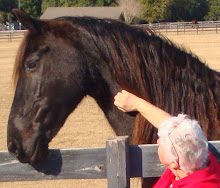The finished product, however, is worth the time you take in preventing splits.
In my visit last month to Virginia Beach yarn shops, I did see that small installation of hyperbolic crochet to form a replica of coral reef. So I brought home a brochure about the display in California and looked up the web site. I was amazed at the creations...and fascinated. Most of the pieces were made from acrylics because they hold the form so firmly.
I love Peaches & Creme cotton worsted and double worsted. So, I pulled out a ball of peacock (turquoise) worsted and began with a straight line of 20 crochet chains. I increased every third stitch. This afternoon at our knitting group, the ball was finished and the piece is beginning to look like brain coral, crenelated (doubling back on itself, wavy, ruffled)somewhat but not too much. I'll post a picture tomorrow (uhhh, today later). This is how coral grows, and the photographs of the Great Barrier Reef and other coral reefs show many shapes of growth.
Okay, so now I'm hooked (pun intended) on making a small display of coral reef growth including some of the sponges and other types of coral. I might even try a fish or two. But, instead of using acrylics, I want to do it in P&C cottons mixed with some eyelash and maybe some wool for felted pieces.
 Sea slugs (sounds horrible, doesn't it?) are actually beautifully colored creatures that look little like the slugs we find on our plants and walkways. They fan out from a center hole (mouth) and are bright colors. (Picture nicked from the NOAA site, I think)
Sea slugs (sounds horrible, doesn't it?) are actually beautifully colored creatures that look little like the slugs we find on our plants and walkways. They fan out from a center hole (mouth) and are bright colors. (Picture nicked from the NOAA site, I think)To get this striation, I think I'll have to use a variegated yarn or a worsted weight color crocheted with a size 10 white and pop a bright little scallop on the edge. If you want to see some beautifully shaped and colored pieces "google" coral reef crochet. Margaret and Christine Wertheim were the co-creators of the reef structure in California and others contributed to the setting - including Sue Van Ohlsen (sp?), whom I met at her yarn shop, The Knitting Corner in Virginia Beach.
Back to protein versus cellulose yarns: To achieve some of the textures in constructing my crochet (and probably some knitted) reef, I will need to use both kinds of fibers. Perhaps such a project will teach me some patience in my fiber work. Not only will I have to be careful with splitting fibers, I will have to figure out how to do that odd shaped opening that will be the beginning of my soon-to-be-begun sea slug. Ideas are welcome.

No comments:
Post a Comment